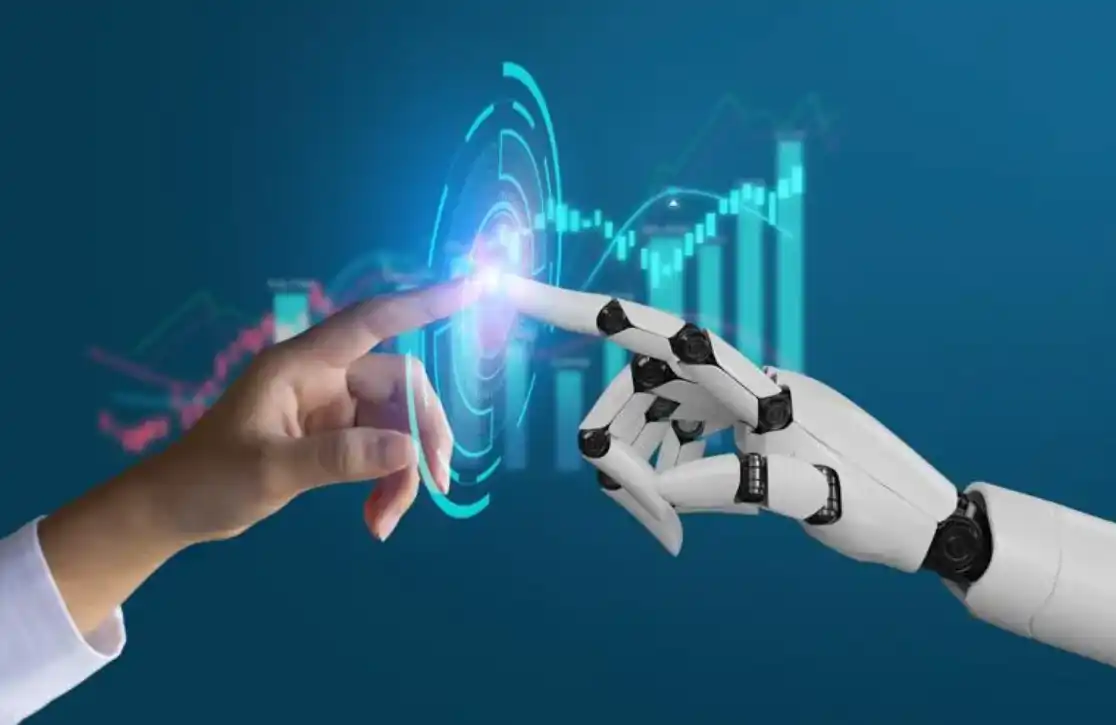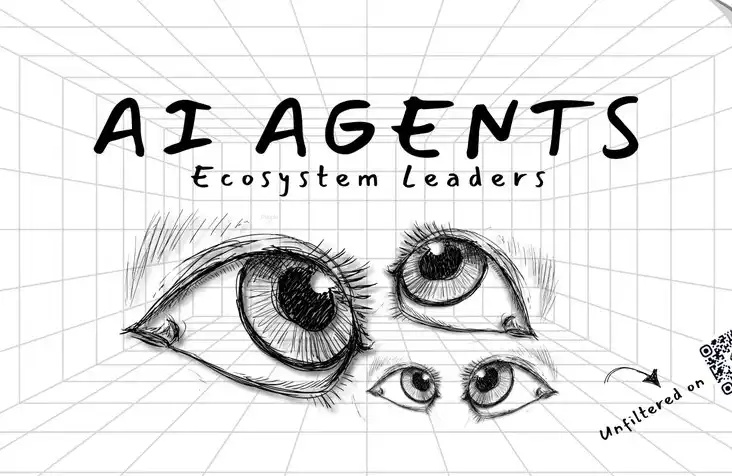Xiao Feng: Ten Economic Rules of the Metaverse.
Original Title: "Ten Economic Rules of the Metaverse" by Xiao Feng
Original Author: Xiao Feng, Wanxiang Blockchain
This article is the preface to "Metaverse Economics" co-authored by Xiao Feng, Chairman and CEO of Wanxiang Blockchain, and Huang Leping, Chief Analyst of Technology and Electronics Industry at Huatai Securities, and Zou Chuanwei, Chief Economist of Wanxiang Blockchain.
What is the Metaverse? In my understanding, the Metaverse is a three-layer architecture consisting of distributed network technology, distributed ledger, and distributed social/commercial components. Firstly, the Metaverse is a digital space, created by a series of digital technologies. Secondly, the Metaverse is not only a digital space, but also a virtual world. Finally, in this virtual world, we will build a universe that corresponds and parallels to the real universe. The economic rules of the Metaverse are certainly different from those of the Internet, just as the economic rules of the Internet are different from those of the manufacturing industry. I believe that the Metaverse has ten major economic rules.
One, Economic System
From the perspective of property rights system and capital income distribution system, we can roughly divide the existing economic models into three types.
The industrial economic model or manufacturing economic model is called the "Main Street model", while Wall Street represents financial capital and "Main Street" represents industrial and industrial capital. The "Main Street model" is characterized by centralized property rights and exclusive capital gains. This stage saw the emergence of many big capitalists, such as Ford, Carnegie, and Rockefeller.
In the information economy mode, also known as the "Silicon Valley model", property rights are decentralized. A key aspect of the "Silicon Valley model" is the expansion of the scope of capital, which is no longer limited to the amount of money, but also includes knowledge as a part of capital. Anyone with the ability can write a business plan and realize the monetization of knowledge by attracting venture capital. The "Silicon Valley model" makes shares highly socialized, and knowledge as a form of capital can replace funds in exchange for shares. Founders retain a portion of the equity, and through rounds of financing such as A, B, and C, the equity is further dispersed. Additionally, many shares are allocated to employees through stock options. Therefore, there are no big capitalists in the "Silicon Valley model", and most are professional managers. There is also a combination of founders and professional managers, and capital returns have correspondingly changed from exclusive to shared.
In the economic model of the metaverse, the equity system may not exist, or even if it does, its value may be greatly reduced. All contributors and participants, as stakeholders, collaborate on a large scale through smart contracts to share the value realized by the metaverse, so capital gains are shared. There is also an important concept that has changed, from "founder" to "initiator". In the "Silicon Valley model", we can introduce ourselves as the founder of a certain company, indicating that we own the company as an "owner". However, in the metaverse model, neither the network nor the self-organization belongs to any individual, and the "initiator" only has sufficient influence on the organization. This is the concept of stakeholder capitalism, which pursues the maximization of common interests or organizational interests.
二、经济组织
translates to
2. Economic Organizations
in English.
Centralized corporate organizations will gradually move towards distributed autonomous organizations (DAOs) in the metaverse.
According to the new institutional economics, the reason why companies are formed is to internalize the external market functions into business organizations in order to reduce transaction costs. Transaction costs include search costs, matching costs, logistics costs, and payment costs, etc. In the era of workshop economy, workshops relied entirely on external markets for exchange, and transaction costs were very high. The formation of companies is a great progress in reducing transaction costs, but it is constantly moving towards a distributed architecture. When companies first emerged, they mainly adopted a top-down decision-making mechanism and had a U-shaped structure. With diversification, business units emerged. And because of globalization, regional headquarters emerged. Business units and regional headquarters gradually took away the power of the group headquarters, and the M-shaped company organization emerged.
DAO in the Metaverse essentially inherits the trend of organizational structure from centralized U-shaped to distributed M-shaped structure in the corporate world. By applying programmability of smart contracts, DAOs can incorporate currency and payment systems, as well as asset trading and clearing systems.
In short, the differences in basic economic systems will lead to significant differences in economic organization. Shareholder capitalism establishes commercial organizations through the corporate system and then securitizes equity shares into stocks. In stakeholder capitalism, there is no longer such an organization as a company, but rather it becomes a DAO and distributes the rights or benefits of the organization to stakeholders through tokenization.
Three, Financial System
The capital market of the metaverse is different from the capital market we are familiar with now, and there may be two sets of capital market systems in the future.
First, there is shareholder capitalism based on the equity system and capital income distribution mechanism of industrial and internet economies, as well as the stock market constructed from it. The stock market enables capital to be realized, motivating people to work hard to establish new companies and create new businesses. More companies bring more intense competition, as well as newer and better services, benefiting consumers.
Secondly, under the capitalist system of stakeholders in the metaverse economy, programmable currencies and assets based on smart contracts will play an important role in achieving stakeholder "ownership" and sharing capital gains. Tokens traded in the market no longer represent ownership, but rather usage rights. This means that through tokenization, the original ownership market will evolve into a usage rights market. Therefore, through stakeholder capitalism, coupled with new business organizations such as DAO and new token markets, we may be able to establish a brand new financial market system, tentatively called decentralized finance (DeFi).
Four, Value Creation Law
In the manufacturing industry economy, the law of value creation is to maximize the company's equity value. This is known as shareholder capitalism.
In the era of the Internet, it is no longer just about maximizing the value of company equity, but about maximizing network value. Kevin Kelly gave an example of the "fax machine effect". You spend $200 to buy a fax machine, which is the cost. But after joining the fax machine network, you and others can send faxes to each other, and the network value you enjoy far exceeds the cost of buying the fax machine. Moreover, when others buy fax machines, you also benefit from increased value because you have more options for sending faxes. The "fax machine effect" explains the concept of network value very well.
The Metaverse is a spatial concept that includes levels such as digital space, virtual worlds, and parallel universes. Based on the pursuit of maximizing network value, the Metaverse further pursues the maximization of the entire spatial value. In particular, virtual space is not limited by many physical rules and can have greater development potential, supporting greater value creation.
Five, Value Distribution Law
The manufacturing industry has the characteristics of high fixed costs and increasing marginal costs. The automobile industry is a typical example of the manufacturing industry. The design and development cost of a new car may be as high as 1 billion or even 2 billion US dollars. In addition to research and development, it also requires a long process of industrialization, sample car production, design modification, and sample car remanufacturing. Moreover, every additional car produced will definitely incur additional costs. Therefore, the pricing model of the manufacturing industry is basically cost-plus, and there cannot be a free model.
In the Internet era, the free model has become mainstream. The metaphor is "wool comes from pigs, but dogs pay for it." The reason why it can be free is because the characteristic of the Internet economy is high fixed costs, but marginal costs decrease or even approach zero. Once a software is developed, there is no significant difference in cost whether it is used by one person or ten million people. In this way, the "free" method can make the threshold for joining the network very low, and quickly gather traffic, so the Internet economy is also a traffic economy. Some Internet services may appear to be free, but the free things may actually be more expensive than the "rare is precious" manufactured products. Manufacturing companies have a market value of up to tens of billions of dollars, while Internet companies can have a market value of tens of trillions of dollars.
Is the metaverse the same as the above model? I don't think so. Anyone can participate in the metaverse economy as a stakeholder and enjoy the value created by everyone according to a fair, just, and transparent distribution mechanism, truly achieving the integration of producers and consumers. I borrow a popular term in the current metaverse business, "X to Earn," and transform it into "Player to Earn," which refers to stakeholders earning returns and sharing the value generated by the metaverse together.
Six, About "Player" in "Player to Earn"
Player refers to stakeholders in the metaverse economy, including developers, creators, contributors, consumers, and investors. All participants are Players in the metaverse, and there are no longer independent shareholders. So what do they "Play"? As participants, as long as they make contributions, whether they come from wisdom, ability, or reputation, they can receive an NFT as proof. NFTs are issued on the blockchain as proof of a Player's contribution.
Seven, About the "Earn" in "Player to Earn"
After contributing to the metaverse and obtaining NFT proof, players will earn standardized and shareable tokens through the token economic model. It can be said that the basic business model of the metaverse should be "Play NFT" and then "Earn Token". Blockchain, as a distributed ledger, is used to keep track of "Player to Earn". We have already seen some applications of "Player to Earn", but this is just the beginning and there will be even greater development in the future.
Eight, Distributed Decision Mechanism
The decision-making mechanism of the metaverse economy is decentralized/distributed. Many people have a huge misunderstanding about decentralization, thinking that it is about resisting censorship, rejecting compliance, or rejecting regulation. In fact, the true meaning of decentralization is not like this.
Efficiency and fairness are eternal topics in economics. From an economic perspective, centralization and decentralization represent the two ends of "efficiency and fairness" in business decision-making: when efficiency is emphasized, a centralized decision-making mechanism should be adopted, which is efficient and unified from top to bottom; if fairness is pursued, more people's opinions should be solicited, more people should participate in voting, and after reaching a consensus, it should be implemented.
The decentralization of the metaverse economy is simply introducing a more fair business decision-making mechanism through digital technology. In the balance between efficiency and fairness, the commercial scenarios of the metaverse need to find their own balance point - the more infrastructure-oriented things need to emphasize fairness, while the upper-level applications need to emphasize efficiency.
I believe that if we can dispel the misunderstandings about decentralization from the outside world, then people's acceptance of blockchain and the metaverse will greatly increase.
Nine, Value Capture of Metaverse Business
The metaverse is different from the internet in terms of products and services. When discussing blockchain, people have always asked: what is the killer application of blockchain? Indeed, compared with internet applications, blockchain seems to have no killer application. To understand this problem, it is necessary to analyze the division of labor in value capture between the protocol layer and the application layer.
The Internet is a protocol stack. For example, the TCP/IP model is composed of several layers of protocols, which allocate addresses based on the IP protocol and enable communication between addresses based on the TCP protocol. The Internet is "thin protocol, fat application". The difference between fat and thin is whether they have the ability to capture value. "Fat applications" refer to Internet applications with great value at the application layer, such as large-scale Internet platforms with market values in the trillions of dollars. However, protocols such as TCP/IP, HTTP, and SMTP are all open source, open, and do not require licenses, and do not have built-in tokens or ways to capture value. Therefore, the Internet has developed many "fat applications" based on the "thin protocol". The Internet economy is not friendly to protocol developers, and none of these developers make money, but the Internet is full of "big players" at the application layer.
Like the internet, blockchain is also a protocol stack. For example, Bitcoin can be seen as the currency protocol of blockchain, while Ethereum can be seen as the settlement protocol of blockchain. However, the protocol stack of blockchain has built-in currency and value systems, becoming a "fat protocol, thin application". The protocol layer itself can capture value, which is the biggest difference between blockchain and the internet.
The infrastructure protocol of the Metaverse also includes a currency system and value system, which can create value at the protocol level. The Metaverse combines many digital technologies at the application layer, creating a spatial concept that is no less valuable than the internet. Therefore, the potential economic situation of the Metaverse is "fat protocol, fat application".
10. The Metaverse Subverts the Manufacturing Industry
As mentioned earlier, the characteristic of the manufacturing industry is high fixed costs and increasing marginal costs, but it is different in the metaverse.
Take BMW's use of Nvidia's Omniverse digital platform to build cars as an example. In the era without the internet, designing and manufacturing a car required a lot of manpower, material resources, and time. Moreover, problem discovery, design upgrades, and iterations all had to rely on physical objects. Therefore, the fixed cost of creating a new car was extremely high. BMW builds cars on the Omniverse software platform, completing everything from design, simulation testing, mold opening, industrialization, and production line layout on the digital platform. As a result, the R&D cost, testing cost, productization cost, and scale cost of designing and manufacturing a new car will all be significantly reduced.
The manufacturing industry has always used waterfall development, where a product must be perfected before it can be launched in the market. However, this perfection is only what the manufacturer thinks is perfect, not necessarily what the customer thinks is perfect. Most products may not meet the needs of customers after they are produced, but huge R&D and manufacturing costs have already been incurred. Manufacturers must sell a large number of products (such as more than 1 million units) to recover R&D costs. If digital platforms are used for R&D and design, rapid iteration can be carried out in the software, greatly compressing fixed costs. In the end, perhaps only 100,000 units need to be sold to recover costs. This has two advantages: first, manufacturers can profit faster, and second, consumer needs can be better met.
This rapid iteration is not only about hardware, but also about software. For example, intelligent connected vehicles. We often say that cars start to depreciate from the second day of purchase. But if a car can be intelligently connected to the Internet, as more and more cars join this network and share information with each other, a "fax machine effect" can be formed. In this way, the manufacturing industry can also achieve economies of scale and increasing returns to scale, which will be a huge disruption to the value distribution rules of the manufacturing industry.
Above are the top ten economic rules of the metaverse as I understand them. Predicting the future is a thankless task, and what I say may not be entirely accurate. However, I still want to emphasize that the economic rules of the metaverse are definitely different from those of the internet, just as the economic rules of the internet are different from those of manufacturing.
Original article link
Welcome to join the official BlockBeats community:
Telegram Subscription Group: https://t.me/theblockbeats
Telegram Discussion Group: https://t.me/BlockBeats_App
Official Twitter Account: https://twitter.com/BlockBeatsAsia
 Forum
Forum OPRR
OPRR Finance
Finance
 Specials
Specials
 On-chain Eco
On-chain Eco
 Entry
Entry
 Podcasts
Podcasts
 Data
Data

 Summarized by AI
Summarized by AI







